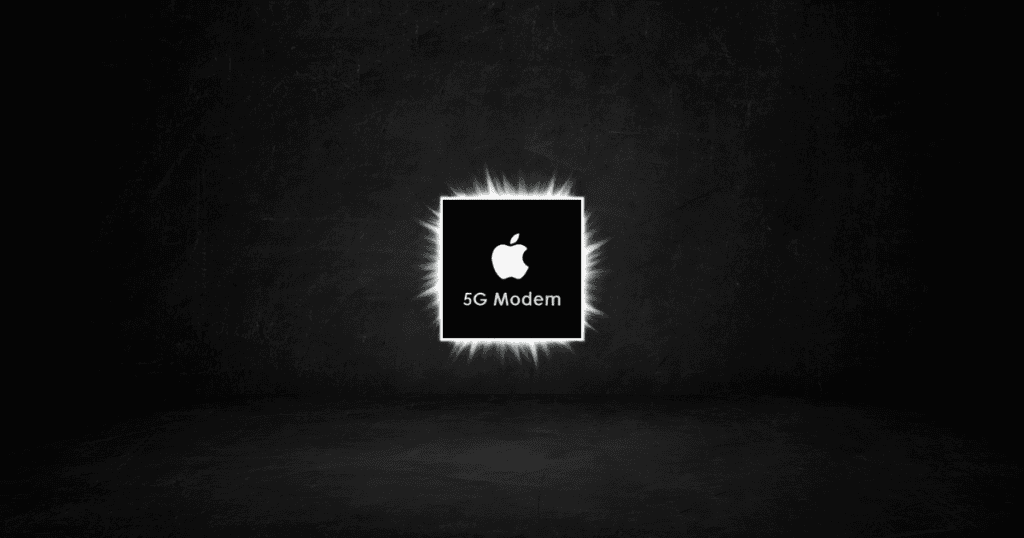The integration of a custom 5G modem into Apple’s iPhone represents a pivotal advancement that is poised to redefine its overall performance and user experience. By embedding this modem within the system-on-chip (SoC), Apple not only promises enhanced data speeds and improved connectivity but also aims to optimize battery efficiency and manufacturing processes. This strategic shift toward self-sufficiency may signal a broader range of innovations on the horizon. As we explore the implications of this development, it becomes essential to contemplate what this means for the future of mobile technology and user expectations.
Impact on iPhone Performance
The integration of Apple’s custom 5G modem into the iPhone marks a significant milestone in mobile technology, promising to enhance overall performance dramatically.
By embedding the modem within the main system on a chip (SoC), Apple aims to improve data speeds and reduce latency, resulting in a more reliable user experience.
The streamlined design not only simplifies manufacturing but also has the potential to enhance thermal management, thereby maintaining ideal performance during intensive tasks.
As a result, users can expect increased reliability in connectivity, which is vital for modern applications.
This innovative integration not only sets a new standard for performance but also paves the way for future advancements in the iPhone’s capabilities, solidifying Apple’s competitive edge in the smartphone market.
Enhanced Battery Efficiency
Apple’s custom 5G modem is set to revolutionize battery efficiency in the iPhone, leveraging advanced semiconductor technology to optimize energy consumption.
By integrating the modem with a new wireless chip, Apple aims to considerably reduce power consumption by consolidating cellular, Wi-Fi, and Bluetooth functionalities into a single component.
This innovative approach is expected to outperform current Qualcomm alternatives, leading to longer usage times not only for the iPhone but also for devices like the Apple Watch.
Additionally, improvements in idle power efficiency during 5G connectivity will address previous concerns about battery drain.
Ultimately, Apple’s focus on enhancing battery efficiency through this custom modem aligns with its long-term vision of providing an exceptional user experience across its product ecosystem.
Integration With the SoC
Integrating the custom 5G modem into the main system on a chip (SoC) marks a significant advancement in Apple’s strategy to enhance device performance and connectivity.
This integration streamlines device architecture by combining the modem with existing wireless capabilities, such as Wi-Fi and Bluetooth, into a single chip. As a result, users can expect improved data speeds, reduced latency, and enhanced overall connectivity reliability.
Additionally, this design emphasizes energy efficiency, potentially extending battery life across Apple’s device lineup. The integration not only supports future 5G standards but also facilitates significant cost savings in manufacturing.
Ultimately, this move reflects Apple’s commitment to self-sufficiency in hardware and positions the company for greater innovation in the competitive smartphone market.
Reducing Supplier Dependence
Reducing supplier dependence is a critical objective for Apple as it initiates the development of its own 5G modem. Following a legal dispute with Qualcomm in 2018, Apple has strategically shifted towards in-house modem technology to reduce reliance on external suppliers.
The ongoing licensing agreement with Qualcomm, valid through March 2027, highlights Apple’s shift phase while it invests billions and deploys thousands of engineers to develop its custom modem. This endeavor aims to enhance manufacturing efficiency by integrating the modem with future wireless chips, streamlining production processes and minimizing the need for multiple suppliers.
Ultimately, Apple’s goal is to eliminate its dependence on Qualcomm, redefining its supply chain strategy and gaining greater control over critical components.
Future Innovations and Features
Significant advancements in 5G technology are set to reshape the iPhone experience, with Apple’s custom 5G modem paving the way for future innovations and features.
By integrating the modem with a new wireless chip that combines modem, Wi-Fi, and Bluetooth functionalities, Apple enhances performance and reliability across its devices. This innovative design is expected to support future 5G standards, improving data speeds and reducing latency.
In addition, the integration into the main system on a chip (SoC) will streamline component size and complexity, allowing for thinner iPhones.
Importantly, energy efficiency improvements from the custom modem will extend battery life across devices, including iPhones and Macs, potentially enabling always-on cellular connectivity in products like the MacBook, enhancing overall user experience.
MacReview Verdict
The integration of a custom 5G modem within Apple’s iPhone represents a transformative advancement in mobile technology. By enhancing performance, optimizing battery efficiency, and reducing reliance on external suppliers, this innovation paves the way for future developments. For instance, a hypothetical scenario where Apple leverages this technology to enable seamless augmented reality experiences could illustrate the potential of always-on connectivity, showcasing how such advancements can redefine user interaction and engagement with mobile devices.



